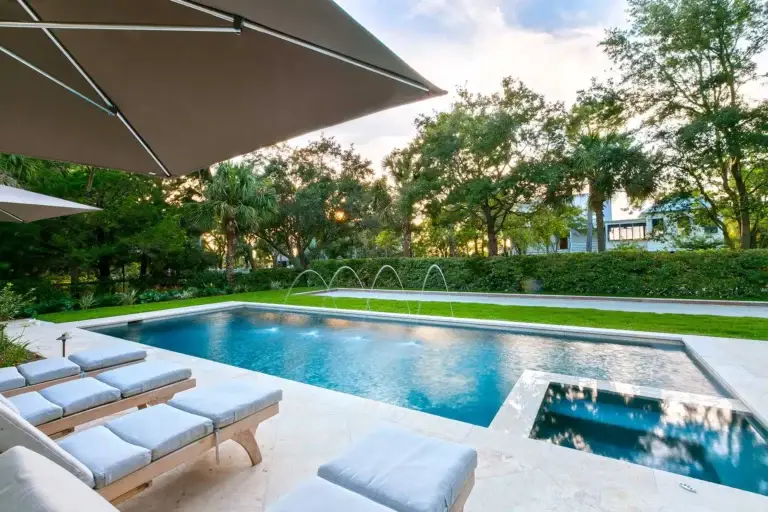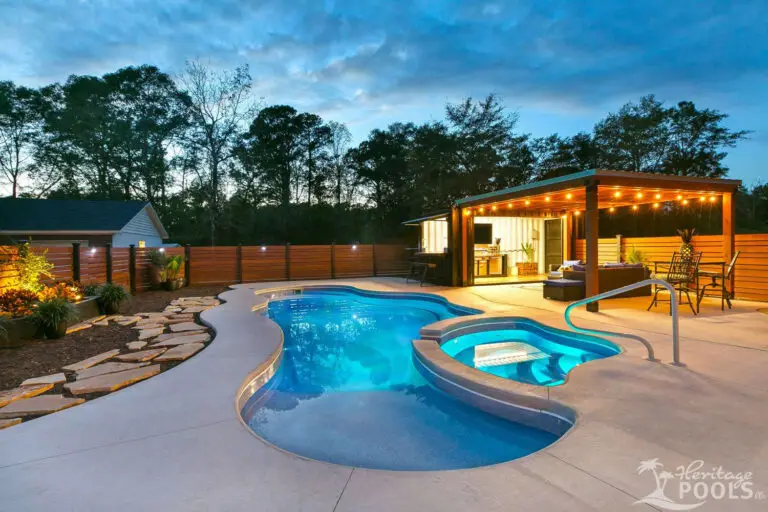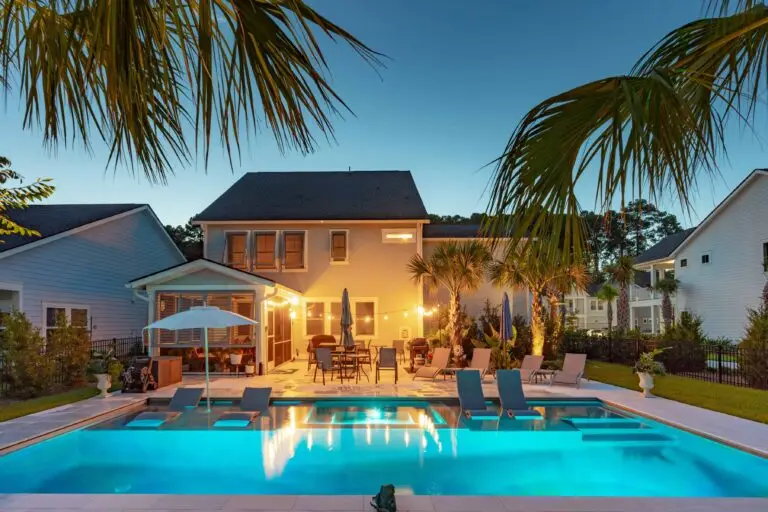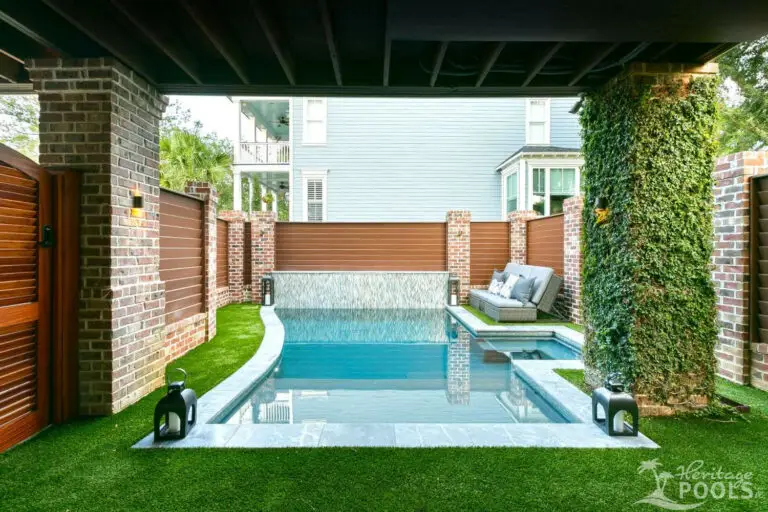At Heritage Pools, we understand that your pool area is the focal point of your backyard oasis, and pool coping is an essential part of that area. If you’re looking for a pool coping guide that covers all the bases, then you’ve come to the right place.
Table of Contents

What is Pool Coping?
Pool coping is the cap or edging that goes around the perimeter of your pool. It serves two purposes: it creates a finished look for the pool and it also provides a non-slip surface for swimmers getting in and out of the pool.
Coping can be made from a variety of materials including natural stone, concrete, brick, and pavers. Choosing the right material for your pool coping is essential, as it can impact the safety and durability of your pool area.
Types of Pool Coping Materials
There are several materials that can be used for pool coping, including:
- Natural stone – Natural stone coping is a popular choice due to its durability and natural look. Some of the most common types of natural stone used for coping include limestone, sandstone, and travertine.
- Concrete – Concrete is a cost-effective option for pool coping. It can be poured into any shape or size, and there are many color and texture options available.
- Brick – Brick coping is a classic choice that can add a touch of warmth to your pool area. It’s durable and requires little maintenance.
- Pavers – Pavers are a versatile option for pool coping. They come in a variety of shapes, sizes, and colors, and can be arranged in any pattern.

Choosing the Right Pool Coping Material
When choosing a pool coping material, there are several factors to consider, including:
- Durability – Your pool coping should be able to withstand exposure to the elements, as well as the wear and tear of swimmers getting in and out of the pool. Natural stone is one of the most durable materials for pool coping, with a lifespan of up to 50 years. Concrete is also a durable option, with a lifespan of up to 25 years. Brick and pavers can last up to 20 years.
- Slip-resistance – Your pool coping should provide a non-slip surface to prevent accidents and injuries. Natural stone and concrete are naturally slip-resistant, but textured finishes can also be added for additional grip. Brick and pavers are also slip-resistant, but may require regular cleaning to prevent buildup of algae or other slippery substances.
- Style – Your pool coping should complement the overall style of your backyard oasis. Natural stone has a timeless look that works well with any style, while concrete can be customized to match the color and texture of your pool area. Brick adds a warm, rustic feel, while pavers can be arranged in any pattern for a unique look.
- Maintenance – Some materials require more maintenance than others. Consider how much time and effort you’re willing to invest in upkeep. Natural stone requires little maintenance, but may need to be sealed periodically to prevent damage from exposure to water and sunlight. Concrete is easy to maintain, but may crack over time and require patching. Brick and pavers are low-maintenance, but may need occasional cleaning to prevent staining or buildup.
Installation Process
The installation process for pool coping varies depending on the type of material used. However, there are some general steps that are followed for most installations:
- Preparation – The pool area is prepared by ensuring the surface is clean and level.
- Layout – The coping is laid out around the perimeter of the pool to ensure a proper fit.
- Cutting – The coping is cut to the appropriate size and shape using specialized equipment.
- Adhesive – Adhesive is applied to the underside of the coping, and it is then set in place on top of the pool shell.
- Finishing – The coping is finished by filling any gaps with mortar or grout and smoothing out any rough edges.

DIY vs Professional Installation
While some homeowners may be tempted to install their pool coping themselves to save money, it’s important to consider the risks and benefits of DIY vs professional installation. DIY installation may save money upfront, but it can lead to costly mistakes and may not be covered by warranty. Professional installation ensures that the job is done right the first time and comes with a warranty for added peace of mind.
Maintenance Tips
Proper maintenance of your pool coping is essential for ensuring its longevity and safety. Here are some tips to keep in mind:
- Clean regularly – Regular cleaning can prevent buildup of algae, dirt, and other debris that can make your pool coping slippery or unsightly.
- Sealant – If you have natural stone coping, it may need to be sealed periodically to prevent damage from exposure to water and sunlight.
- Repair cracks – Cracks in your pool coping can be dangerous and should be repaired as soon as possible.
- Professional inspection – Have a professional inspect your pool coping regularly to ensure that it is in good condition and does not pose any safety hazards.
Summary
Pool coping is an essential part of any pool area, providing both a finished look and a non-slip surface for swimmers. Choosing the right material for your pool coping is crucial, as it can impact the safety and durability of your pool area. Natural stone, concrete, brick, and pavers are all popular choices, each with their own advantages and disadvantages.
With this guide, you can make an informed decision about your pool coping and enjoy your backyard oasis for years to come.




